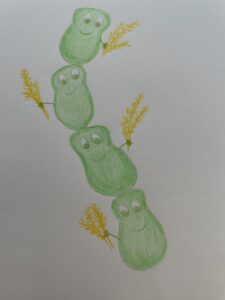It is well known that a growing global population drives an increased meat consumption. As such in response, there has been a huge movement to find other protein sources besides animal meat. By now, insects, plants or fungus-based substitutes combined with soy, wheat gluten or pea protein have become staples at our local supermarket.
This drive has also led to the development of “cultivated meat” as an alternative source of protein. This “cultivated meat” is produced in the laboratory by a process that is commonly used in medical tissue engineering, to regenerate skin patches for example to treat burn wound victims.
As such, the first patty grown from cells sourced directly from an animal happened in 2013; and the first commercial sale of cell-culture meat derived from chicken cells happened in a Singapore restaurant in December 2020. There’s currently a lot of hype from start-ups and regulatory agencies to get this process rolling in a more efficient and standard way.
So, the objective of this regenerative procedure is to recreate the complex structure of an animal muscle using only a small number of cells. A biopsy is taken from the muscle of a live animal, and this piece of tissue is cut into small pieces to release the stem cells, which then have the ability to multiply and transform themselves into different kinds of cells depending on the medium that they are grown. As such, once these cells are cultured in a specific liquid medium, which usually contains Fetal Bovine Serum (FBS) – a serum made from the blood of a dead calf, which contains all the nutrients needed – these cells will start to grow and proliferate. Rumour goes that start-ups are already working on finding plant ingredients that can be as efficient and nutritious growing cells as FBS – which is quite expensive, and of course not animal-friendly.
Trillion of cells can be grown this way, and the marvel with nature is that these cells can naturally merge to form muscle tubes (myotubes), which can then grow to form small pieces of muscle tissue – and eventually make up a patty. To scale this process, bioreactors are used, which work similarly to the way different pharmaceutical drugs are currently produced.
Unfortunately, the resulting patty is still far away from real muscle, which is made up of organized fibers, blood vessels, nerves, connective tissue and fat cells; as such, producing a thick piece of meat like a real steak is only a vision. “Cultivated meat” lacks the natural process of reperfusion, which is the bubbling of oxygen perfusion of blood vessels inside the meat necessary to mimic real-time nutrient diffusion. Furthermore, the richness of flavors is still significantly lower than traditional meats; with umami, bitterness and sourness still lacking due to a diminished amount of different aminoacids – the building blocks that form a protein. It’s like, such in vitro patties are only made of blue and yellow LegoTM, missing all the other colors that will make us feel fulfilled.
The problem remains that this food cannot be called vegan, because it comes originally from animal cells – whether from a chicken, or a cow, or even a frog…. And, growing meat in the lab is also not cheap at all. High amounts of liquid serum are needed to grow a couple plates of cells, not to mention grow a couple of patties to feed a family of four. Furthermore, there is a need to warm the cultured cells to mimic body temperature, so that energy needs to come from somewhere, probably coupled with CO2 emissions if fossil fuels are used. Additionally, fast growing cells are a known trigger to develop cancer – so, there needs to be a strong safety and quality assessment to make sure that cancerous cells have not developed in those in vitro meats. And another major issue is contamination: without the use of antibiotics or some other pharmaceutical means of pathogenic control, there is a high likelihood of a fully diverse & inclusive germs-party happening in those cell plates.
But truth be told, the current pressure on our food system and the increasing demands for food security, make a strong argument to find solutions for all environmental and health concerns that might arise from the field of “cultivated meat”.
It might take some years, but it will be coming to our tables…
Would you try it?

References:
Fountain, H. Building a $325,000 Burger. The New York Times https://www.nytimes.com/2013/05/14/science/engineering-the-325000-in-vitro-burger.html, 1 (2013).
Chriki S, Hocquette JF. The Myth of Cultured Meat: A Review. Front Nutr. 2020 Feb 7;7:7. doi: 10.3389/fnut.2020.00007. PMID: 32118026; PMCID: PMC7020248.
Joo ST, Choi JS, Hur SJ, Kim GD, Kim CJ, Lee EY, Bakhsh A, Hwang YH. A Comparative Study on the Taste Characteristics of Satellite Cell Cultured Meat Derived from Chicken and Cattle Muscles. Food Sci Anim Resour. 2022 Jan;42(1):175-185. doi: 10.5851/kosfa.2021.e72. Epub 2022 Jan 1. PMID: 35028582; PMCID: PMC8728501.

